Actor-writer-director Barbara Loden’s film is an extraordinary work in American film history, a bracing tale of a working-class woman’s weariness, drift, and refusal of the romantic plot of marriage and children. The dispossessed Wanda (Loden) deserts her given life as a coal miner’s wife and mother. Her slow unmooring from motherhood, from family, from law is the film’s primary subject, filmed as though this was cinema’s only proper subject. Without a home, she attaches herself to several terrible men in exchange for a beer, a roof for the night, a ride. The humiliations and revulsions of this life pile up, but also bear an assertive raw beauty, amplified by the film’s precise, granular gaze. She unwittingly stumbles into a holdup and a brief relationship with an irascible loner and crook (Michael Higgins), who is even more unfit for this world than she is. But things go awry, and Wanda returns to wandering with a vagabond’s solitude.
Loden’s vision of a working-class woman abandoning her given vocation to wander with whomever she may was an incendiary gesture, unparalleled then as now. Loden’s own meandering path to filmmaking was indirect, perhaps providential. Loden was a film, television and stage actor, though her career would be oft overshadowed by her relationship with director Elia Kazan. She was a series regular on The Ernie Kovacs Show (1952-61) in 1956, won a Tony Award and appeared on the cover of a major magazine. Yet, Loden may well have played the supporting character in Kazan’s narrative, as an overlooked, typecast ingenue and as his second wife, if not for her will to emerge on her own creative terms with Wanda.
Loden’s Wanda was her first and only feature, which she wrote, produced, directed and starred in as the lead. It was shot on a small scale on 16mm colour Kodak Ektachrome reversal film, then blown up to 35mm, with a four-person crew (director, cinematographer, sound and lighting person, and an assistant), a handful of professional actors (including herself, Higgins, Frank Jourdano and Valerie Mamches) and various local non-professionals. Cinematographer and editor Nicholas Proferes had experience in documentary, and the 16mm gauge gave the film a fleetness unseen in bigger productions. Shooting spanned ten weeks on location in Lackawanna County, Pennsylvania; in Carbondale, Dickson City and Scranton; and in Connecticut during the summer of 1969.
Wanda operates in an evocatively descriptive register, a fictional manifestation of a working-class woman, a figure of both specificity and typicality. It presents a composite layering of multiple personas, real and fictional. In 1960, Loden read a newspaper story about a failed bank robbery involving an outlaw couple in Cleveland, Ohio. She was struck that the female accomplice ‘thanked the judge’ for her sentence. Loden also looked to her own sense of a life she had narrowly escaped, broaching the jettisoned dreams of ordinary American women. Loden envisaged in Wanda an amalgamation of a woman, her unspoken-of life and her struggle to endure it. She makes out of these complex layers an abiding portrait of a woman’s ambling search for the tenuous terms of her own worth.
Wanda’s inventiveness drew on Loden’s indomitable independent ethos, aligned with the New American Cinema, and the ‘amateur’ sensibility and improvisational aesthetics of filmmakers such as John Cassavetes and Shirley Clarke. The film was the manifestation of an idea that had percolated in Loden’s mind for a decade. The project was transformed and shaped by the exigencies of a limited budget, location shooting and the use of a cast of local non-actors, as well as by her auspicious collaborations with Proferes and co-star Higgins. But at the core was Loden’s own exquisite turn as the titular wanderer, whose weary gestures, tentative voice and insistent presence define the film. She embodies the poignant passivity of the wastrel Wanda Goronski: nobody’s heroine, everybody’s woman.
Both lax and tight, Wanda is austere in its deliberative nature but dynamic in its peripatetic camera movements and redactive editing. Abjuring sentimentality, the film combines the naturalistically heightened settings of the ruins of anthracite mining and narrative ellipses and ambiguities, presenting a series of disaffected byways and dead zones of mid-Americana: a tumble of parking lots, shopping malls, greasy spoons and shoddy motels. The film’s observational particulars of place are dynamised by a withdrawn, inward-directed performance on the part of Loden and the erratic colicky rage in Higgins’ rendition of the misfit Mr Dennis.
Loden described Wanda as an ‘anti-_Bonnie & Clyde_ movie’; she wrote it many years prior to Arthur Penn’s pivotal 1967 New Hollywood film, and pointedly repudiated the glitz of Penn’s ‘too beautiful’ desperados. Wanda was perhaps the most profound emblem of a new American cinema freeing itself from the hidebound conventions of the failing studio system. It also traced the disappointments and shunted aspirations of women’s lives, on and off screen, in front of and behind the camera. Wanda Goronski, in her passive, withdrawn and sullen comportment, was also a confounding figure for feminist politics, doing the masculinist road film’s ‘pathos of failure’ one better in her woman’s strike without a name. Refuting psychological depth and motivational causality, Wanda’s modernity rested in the figuration of a blighted, inarticulate subjectivity, not yet fully known to herself.
Instead of a cinema of action, Loden emphasises her protagonist’s pathos of suspension, of a slowed and obstructed mobility – an aesthetic that critiques the ‘can do’ myths of capitalist individualism, the telos of progress and betterment that undergird the American Dream, and the road genre’s fantasies of freedom. Wanda’s slowness harnessed the sociological specificity and philosophical quandaries of ‘women’s time’ several years before Chantal Akerman’s heralded Jeanne Dielman, 23 quai du Commerce, 1080 Bruxelles (1975). Yet unlike Jeanne, Wanda, in her refusal to adhere to the ordering of the reproductive clocks and measures imposed on the working-class housewife, resembles a proto-feminist Bartleby who prefers not to.
Extracted from Wanda by Elena Gorfinkel (BFI Film Classics, 2025).
Reproduced by kind permission of Bloomsbury Publishing. ©Elena Gorfinkel
Wanda
Director: Barbara Loden
Production Company: Foundation for Filmmakers
Producer: Harry Shuster
[Production] Assistant: Christopher Cronyn
Screenplay: Barbara Loden
Director of Photography: Nicholas T. Proferes
Lighting: Lars Hedman
Editor: Nicholas T. Proferes
Sound: Lars Hedman
Sound Mixer: Dick Vorisek
Sound Editor: Harvey Greenstein
Cast
Barbara Loden (Wanda)
Michael Higgins (Mr Dennis)
Dorothy Shupenes (Wanda’s sister)
Peter Shupenes (Wanda’s brother-in-law)
Jerome Thier (Wanda’s husband)
Marian Thier (Miss Godek)
Anthony Rotell (Tony)
M.L. Kennedy (judge)
Gerald Grippo (court clerk)
Milton Gittleman (factory owner)
Lila Gittleman (factory owner’s wife)
Arnold Kanig (travelling salesman)
Joe Dennis (Joe)
Charles Dosinan (father)
Jack Ford (Mr Anderson)
Rozamond Peck (Mrs Anderson)
Susan Clark, Linda Clark (daughter of Mr and Mrs Andersons)
Bill Longworth (newscaster)
Frank Jourdano (soldier)
Valerie Mamchez (girl in roadhouse)
Pete Richman, Ed Somavitch (musicians)
USA 1970
103 mins
Digital and 35mm (3 Jun only)
The screening on Tue 3 Jun will include an extended season introduction by Elena Gorfinkel
The screening on Sat 7 Jun will be introduced by Jo Molyneux, BFI Archive Access Researcher
New 35mm print made with funding from the National Lottery
Read more in Elena Gorfinkel’s new BFI Film Classic on Wanda, available at the BFI Shop and online
SIGHT AND SOUND
Never miss an issue with Sight and Sound, the BFI’s internationally renowned film magazine. Subscribe from just £25*
*Price based on a 6-month print subscription (UK only). More info: sightandsoundsubs.bfi.org.uk

BFI SOUTHBANK
Welcome to the home of great film and TV, with three cinemas and a studio, a world-class library, regular exhibitions and a pioneering Mediatheque with 1000s of free titles for you to explore. Browse special-edition merchandise in the BFI Shop.We're also pleased to offer you a unique new space, the BFI Riverfront – with unrivalled riverside views of Waterloo Bridge and beyond, a delicious seasonal menu, plus a stylish balcony bar for cocktails or special events. Come and enjoy a pre-cinema dinner or a drink on the balcony as the sun goes down.
BFI PLAYER
We are always open online on BFI Player where you can watch the best new, cult & classic cinema on demand. Showcasing hand-picked landmark British and independent titles, films are available to watch in three distinct ways: Subscription, Rentals & Free to view.
See something different today on player.bfi.org.uk
Join the BFI mailing list for regular programme updates. Not yet registered? Create a new account at www.bfi.org.uk/signup
Programme notes and credits compiled by Sight and Sound and the BFI Documentation Unit
Notes may be edited or abridged
Questions/comments? Contact the Programme Notes team by email

